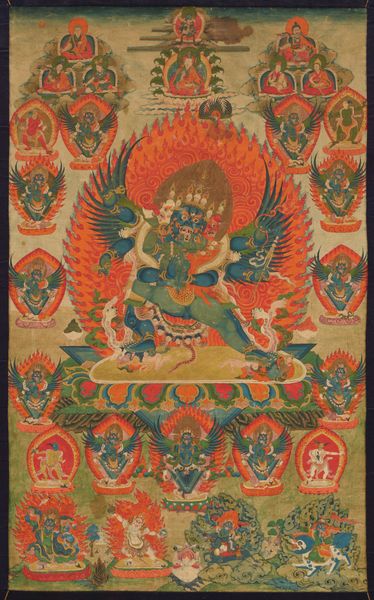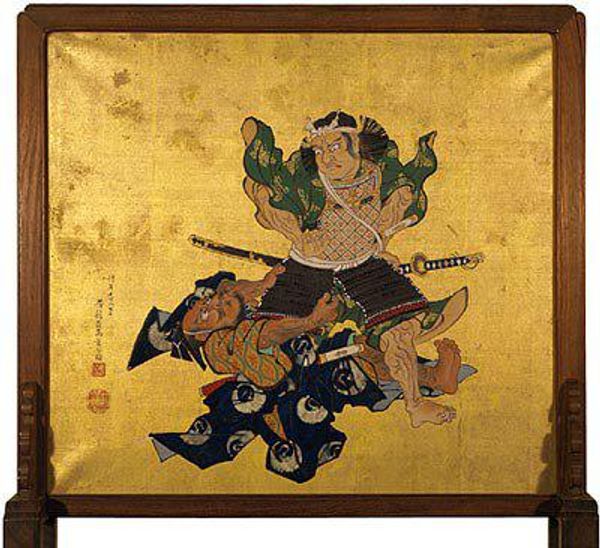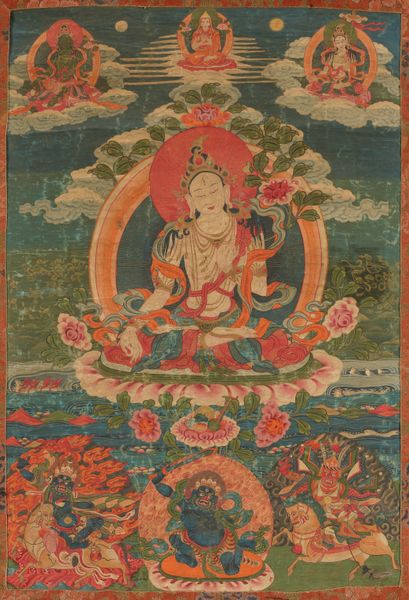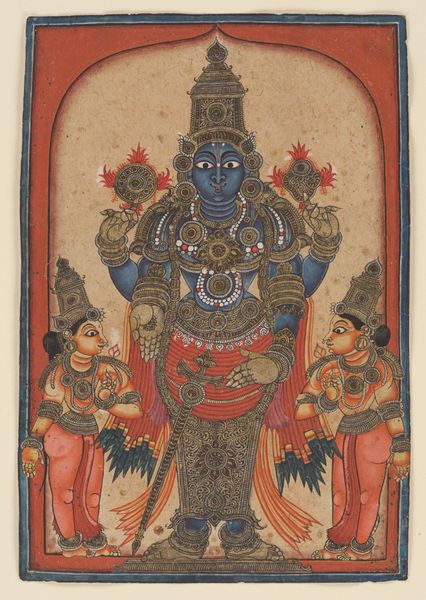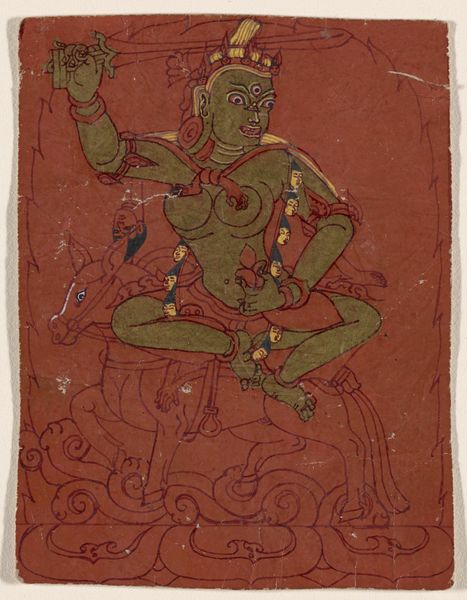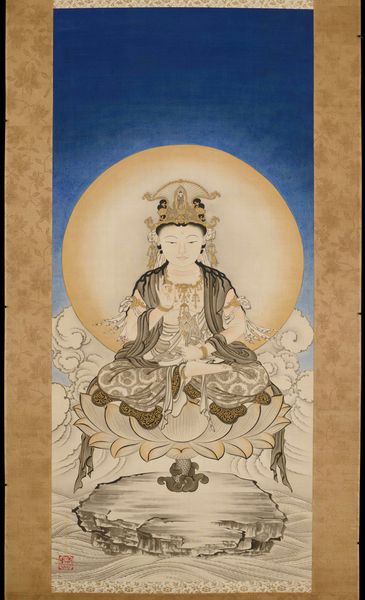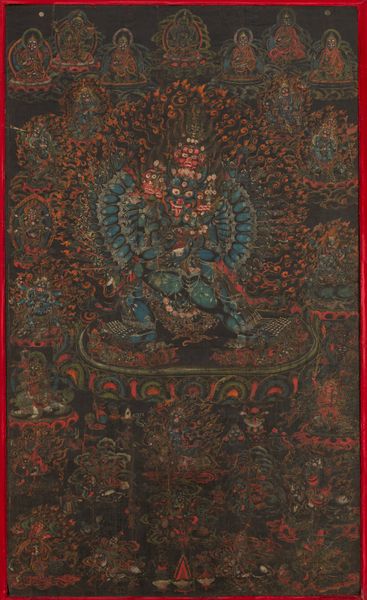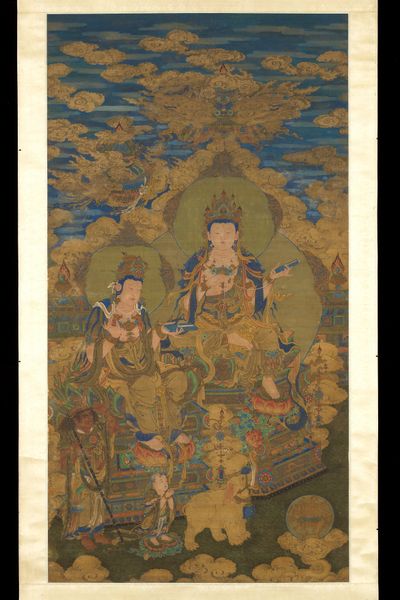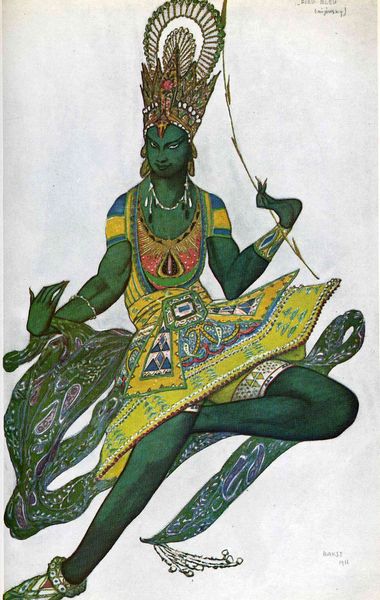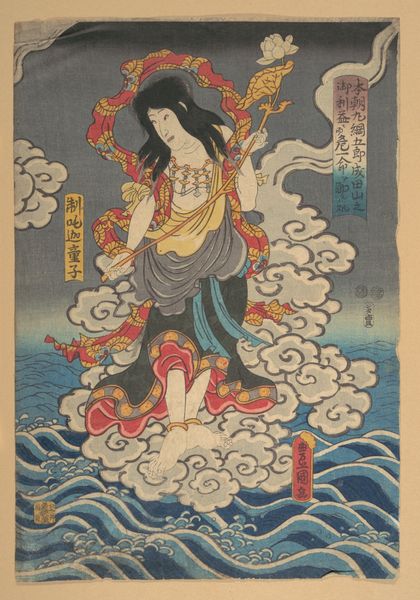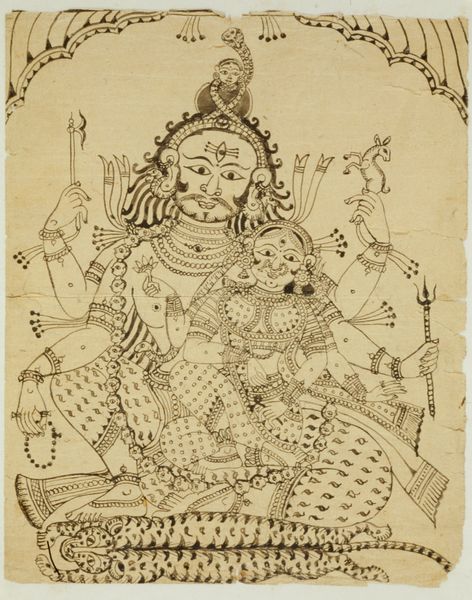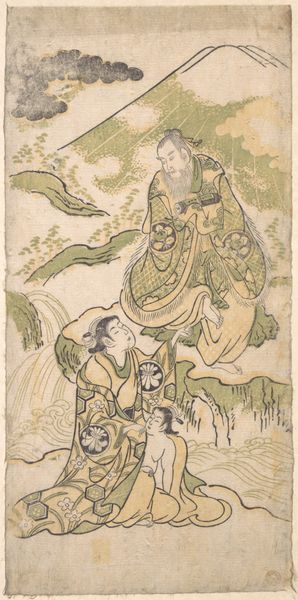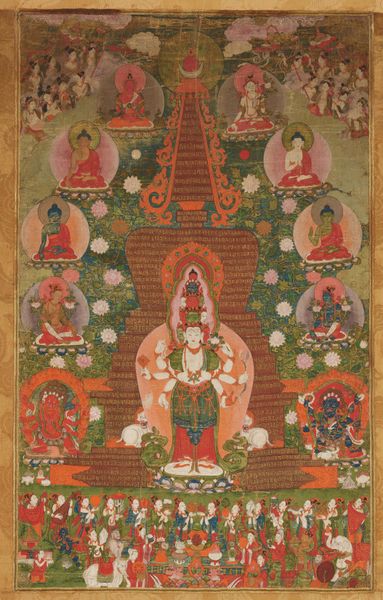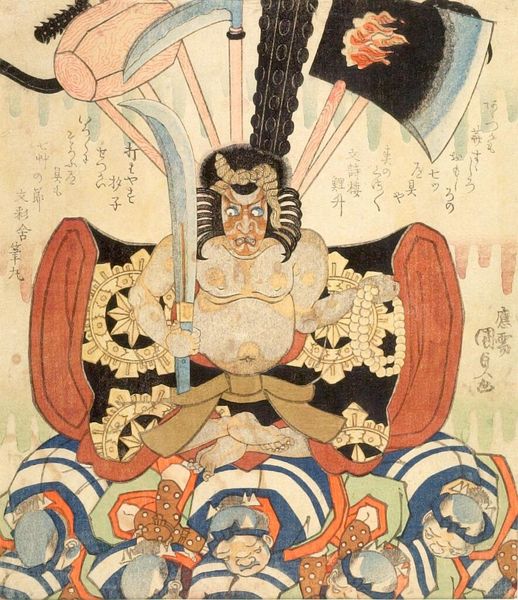
painting, watercolor
#
narrative-art
#
painting
#
asian-art
#
figuration
#
watercolor
#
naive art
#
mythology
#
watercolour illustration
Copyright: Nandalal Bose,Fair Use
Editor: Nandalal Bose’s “Annapurna,” a watercolor from 1943, is incredibly striking. The colour palette and use of line are evocative and dynamic. What jumps out to me immediately is the contrast between the two central figures. How do you interpret this work, seeing it through a formalist lens? Curator: Initially, the work strikes me as operating along two axes. Note how Bose employs contrasting chromatic arrangements. A vivid gradient of oranges establishes the plane, while a cerulean disc encircles the Goddess. Consider, too, how the figures differ in line. The Goddess' figure flows elegantly with a more classically proportioned structure while the other form, more skeletal, occupies stilted space. What effect is created? Editor: It makes it feel like two distinct planes, with separate but connected modes of being. The use of color, line, and overall construction give these figures different characteristics, and separates them formally. The male deity is bony, seemingly flayed. Do you believe this work attempts to communicate cultural information? Curator: Precisely. We see, formally, a deconstruction, an application of abstraction. Note the colour choices: orange for base earthly elements and a spectral cerulean above for enlightenment, which serve to further isolate these forms as planes of being within the structure of the image itself. The cultural narrative is being advanced in terms of formal play of chromatic presentation, form, and material application. What of that application interests you most? Editor: It would have to be the use of line to communicate figural divergence! I really had not understood the degree to which visual composition is meaning. Thanks for the new insights! Curator: Indeed! These compositional methods, as employed by Bose, invite the viewer to engage deeply with how the very structure of a piece builds meaning. It is in this relationship that art finds itself.
Comments
No comments
Be the first to comment and join the conversation on the ultimate creative platform.
